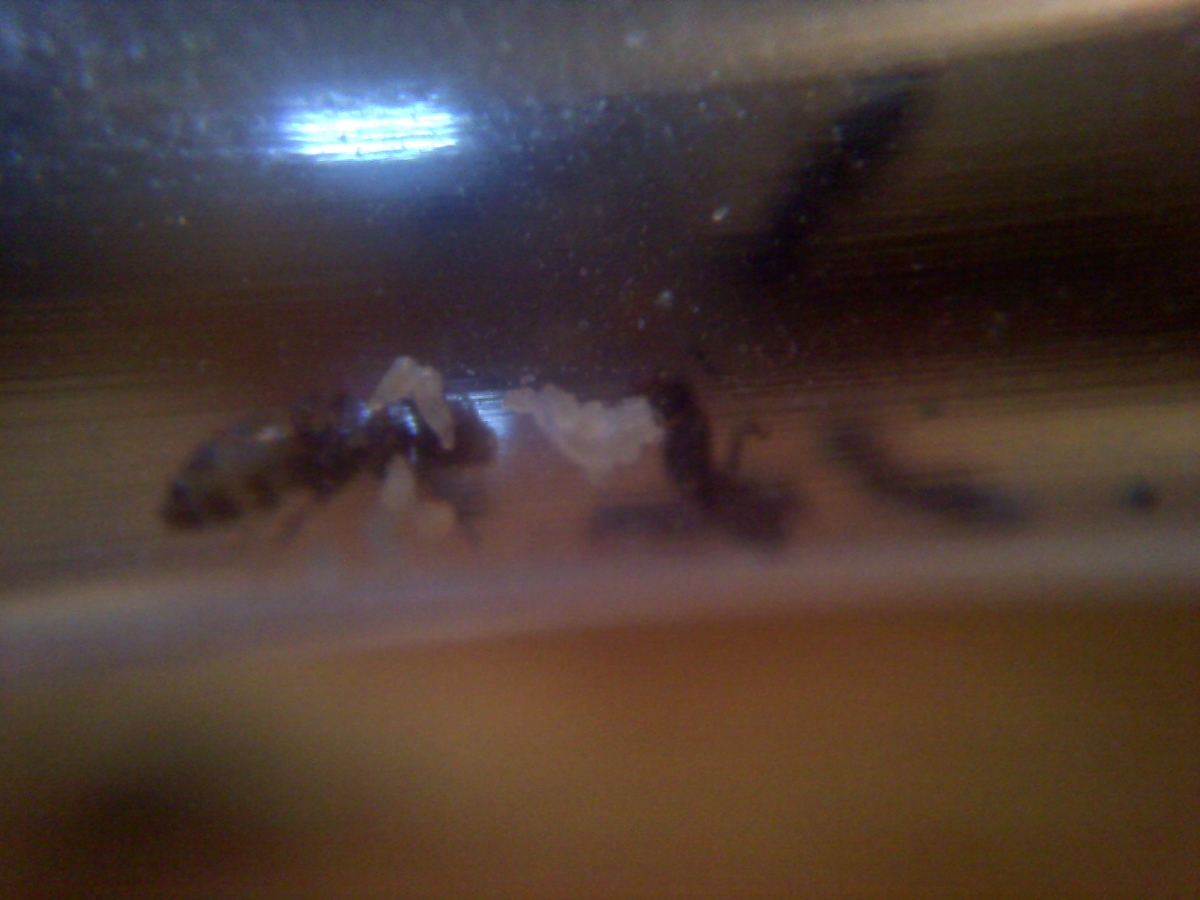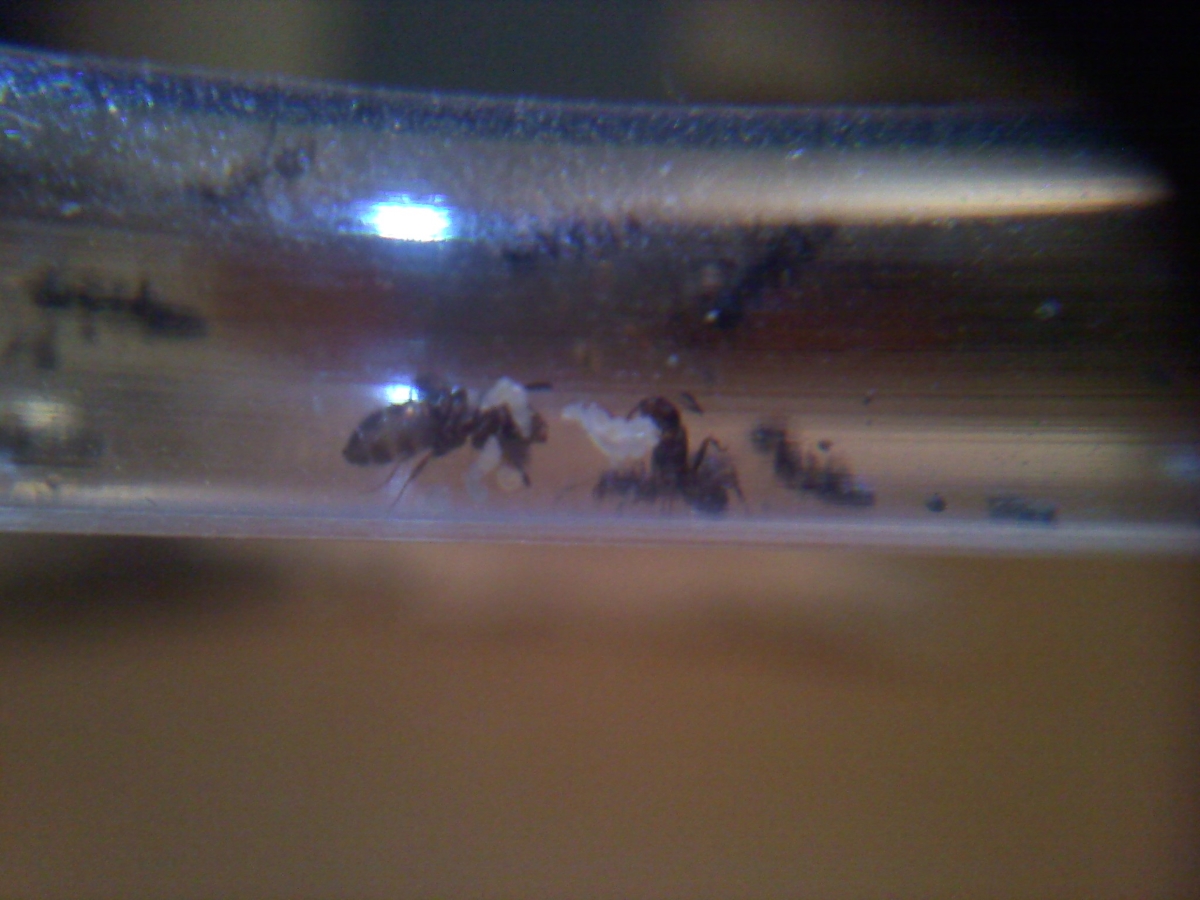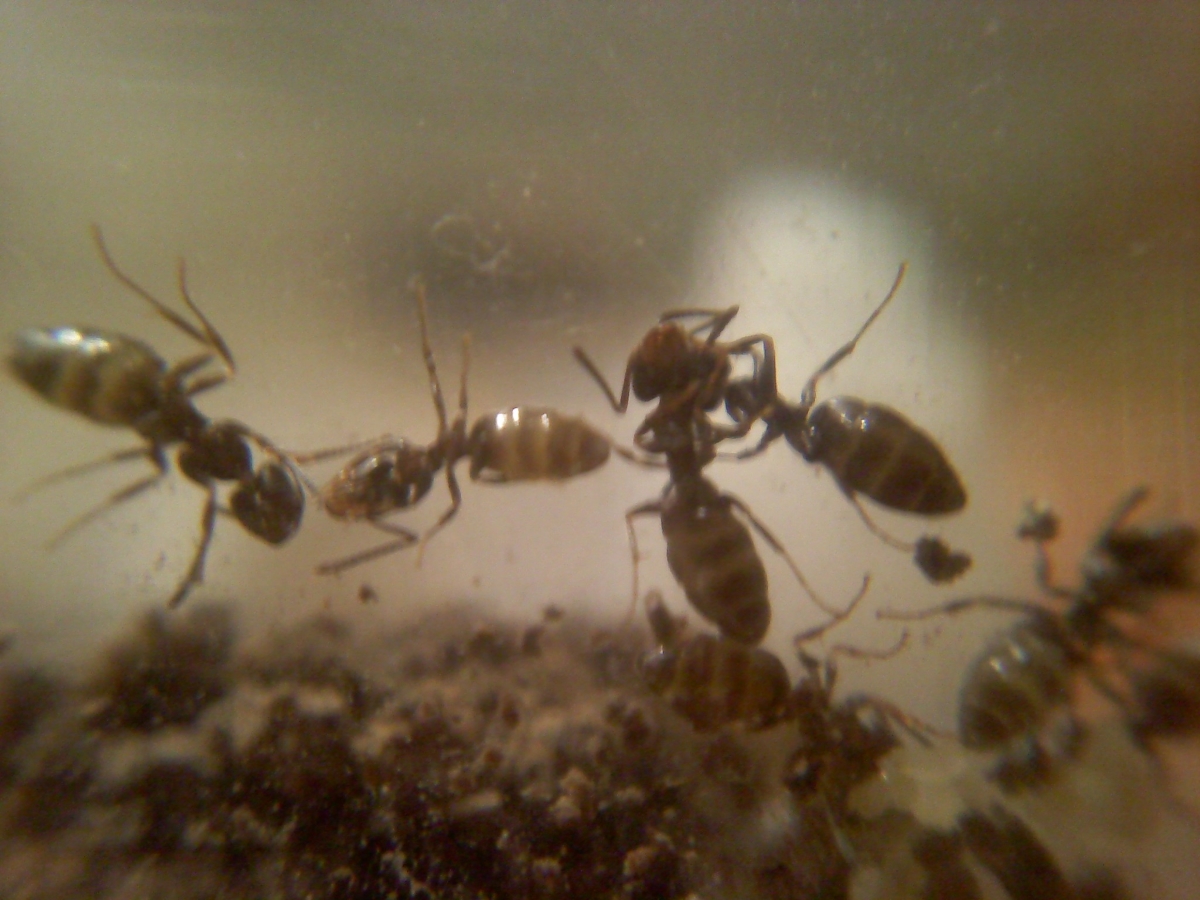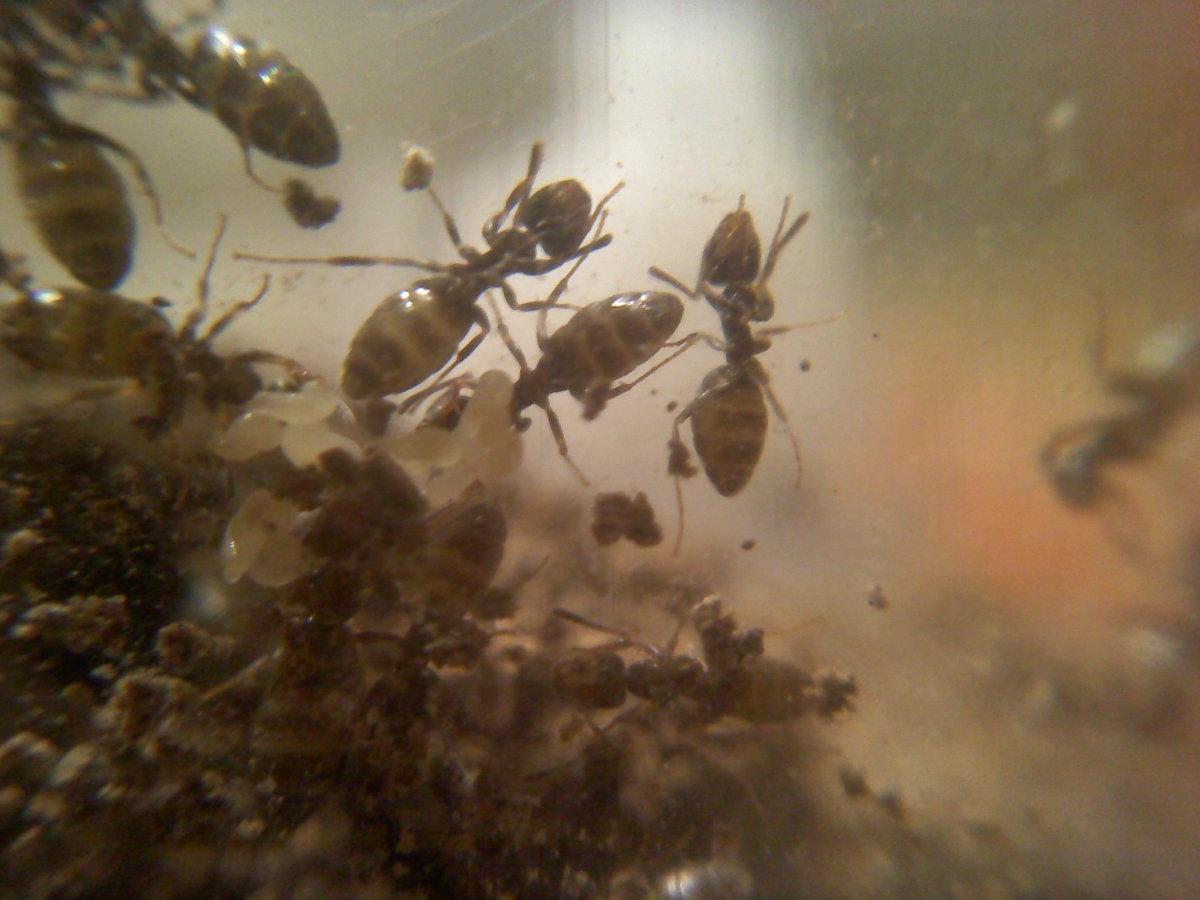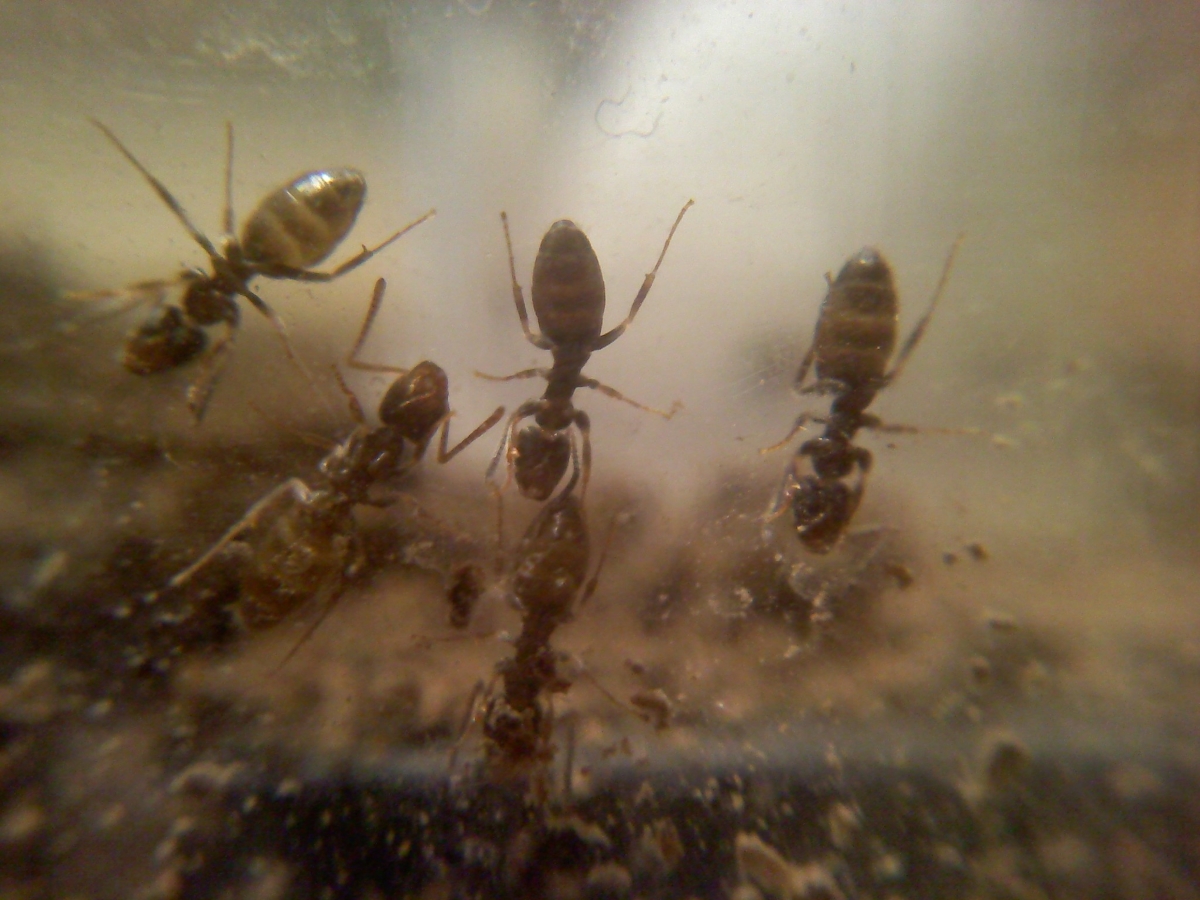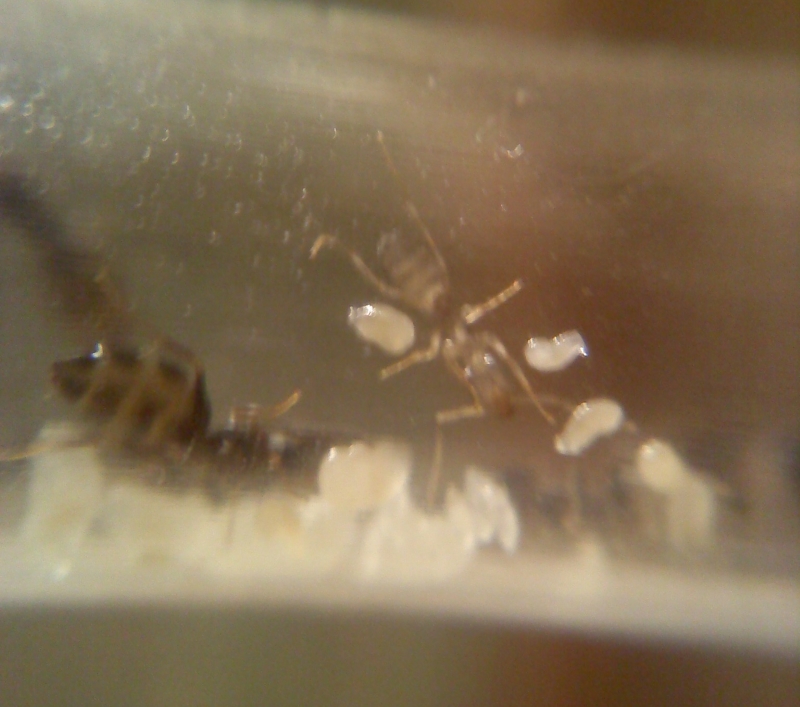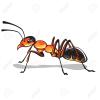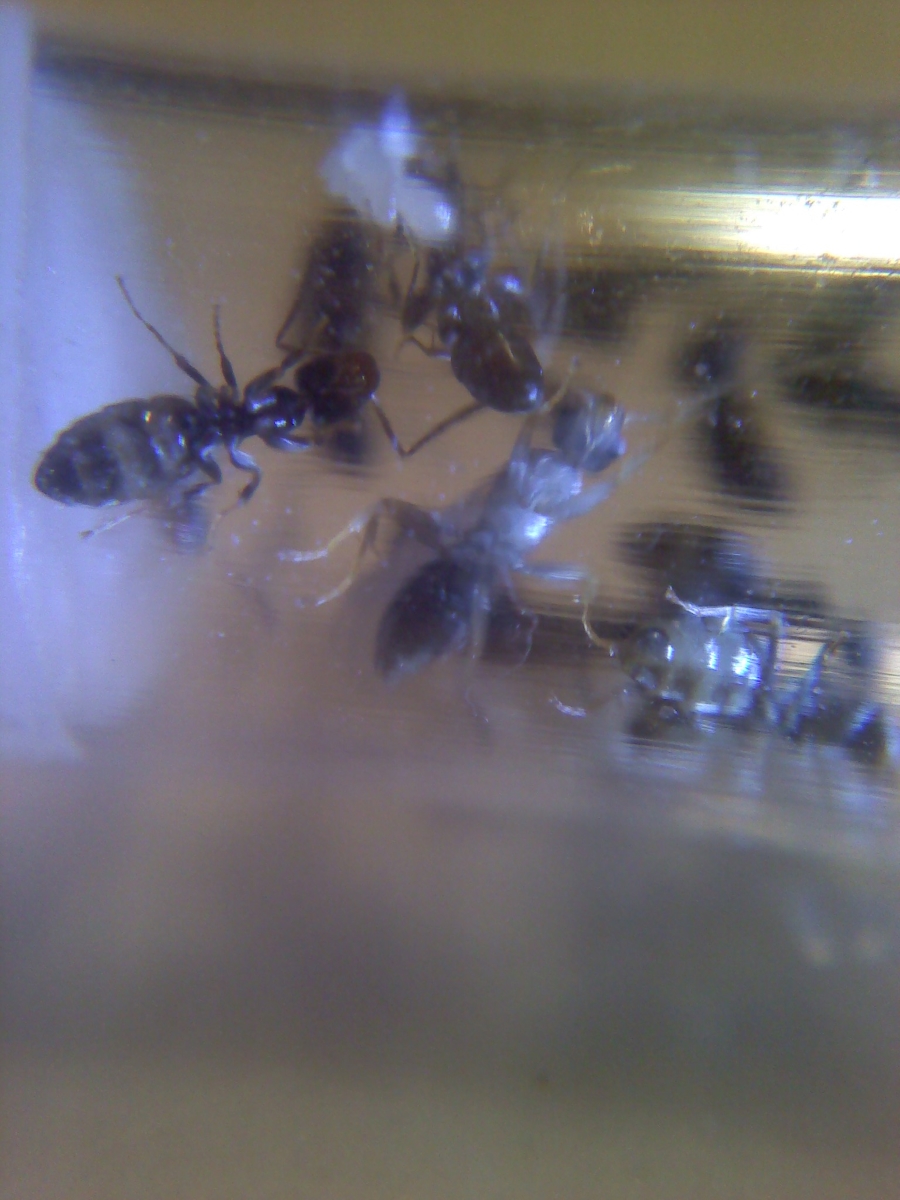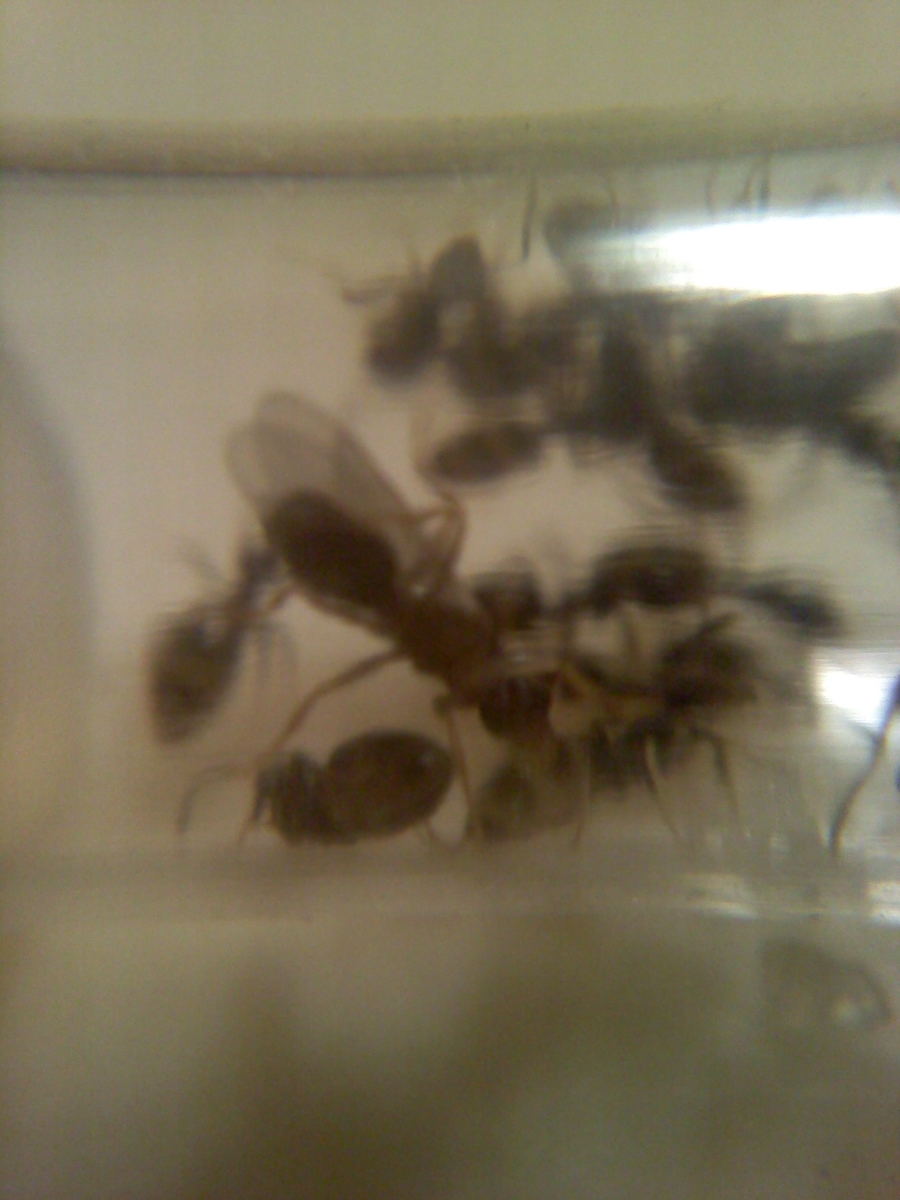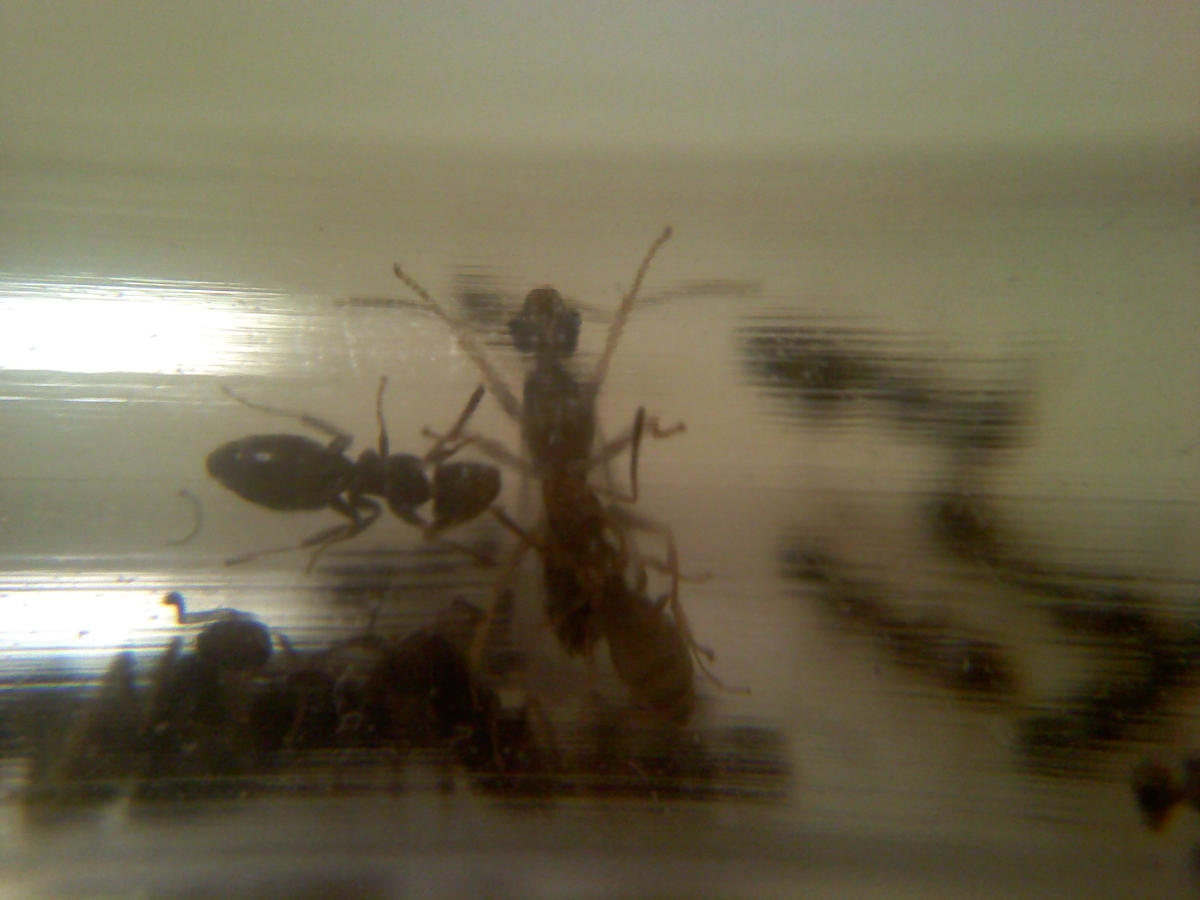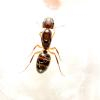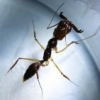So I just noticed that my Tapinoma sessile workers (no queen) have some eggs. At least I think so. A few of them spend pretty much all of their time in a connector tube and when I took a closer look today, I spotted some white specs next to them. One of them must have been carrying a few when I caught them. My goal has been to keep these guys up and running as long as possible, maybe through winter if I'm lucky. The prospect of them raising some eggs is certainly an added bonus. So my question is, are these actually eggs and if so, will the workers raise them? I know queens don't usually care for the eggs after the early stages of a colony, but I wasn't sure if the workers would continue to take care of the eggs without her presence.
